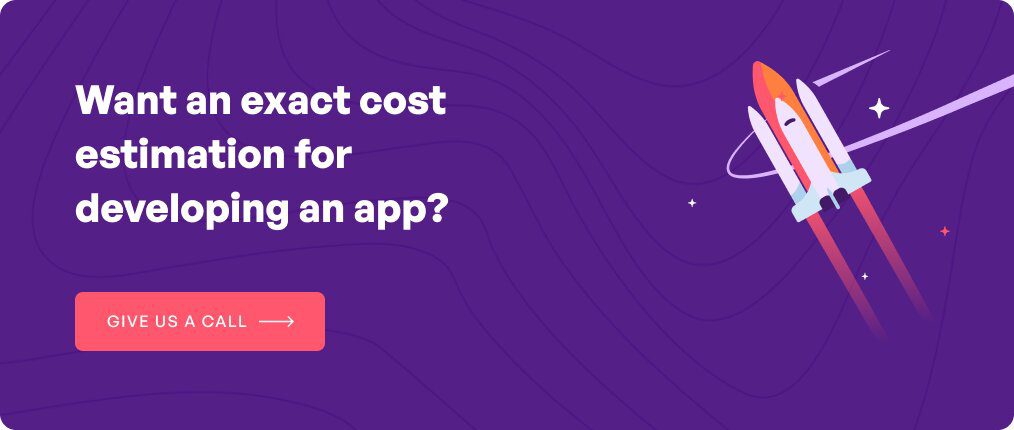It is a well-known fact that mobile app design and development costs are significantly high. The expenses range between $50,000 and $250,000 depending on the complexity and type. However, investing in smart phone applications is worth it since it has a myriad of rewarding benefits for both small businesses and established enterprises. These include stronger brand value, heightened interactivity, better personalization, and increased customer engagement which can altogether boost revenue and thus, profits.
So, it is no surprise that the app market is expected to grow at a 8.83% CAGR leading to predicted volume of $673.80 billion by 2027. Here are other futuristic statistics:
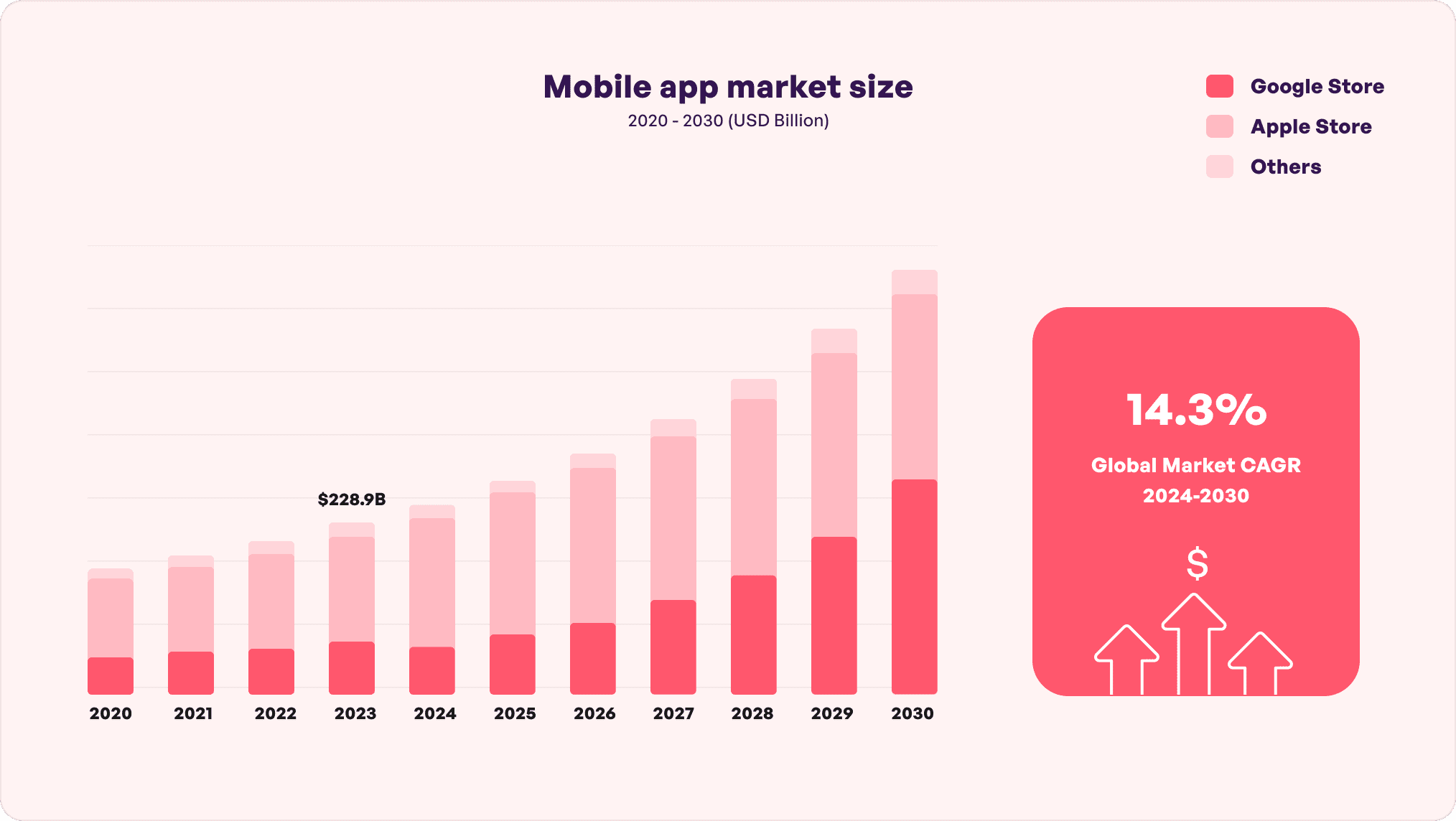
Owing to these statistics, it is a good idea to consider a reputed mobile app development company where professionals strive to maintain the budget limits without derailing the quality.
Simublade can be an ideal fit and your go-to partner if you wish to build an intuitive, user-friendly, and innovation-first mobile application. We build viral products by assessing the technical and market viability, deploying powerful tech stack, and conducting rigorous testing to take your ideas to the global smartphone market. With us, you can be rest assured that you will win the competitive mobile space and it won’t bankrupt your business.
Now let us look at the factors that affect the mobile app development costs and effective ways to reduce the same. Read on to find out.
Table of contents
Top factors that impact app development costs
There is no clear answer on mobile app development costs since it can widely vary. To put things into perspective, below are the factors with ballpark estimates. The best developers are careful to make sure these expenses do not spiral out of hand. Have a look.
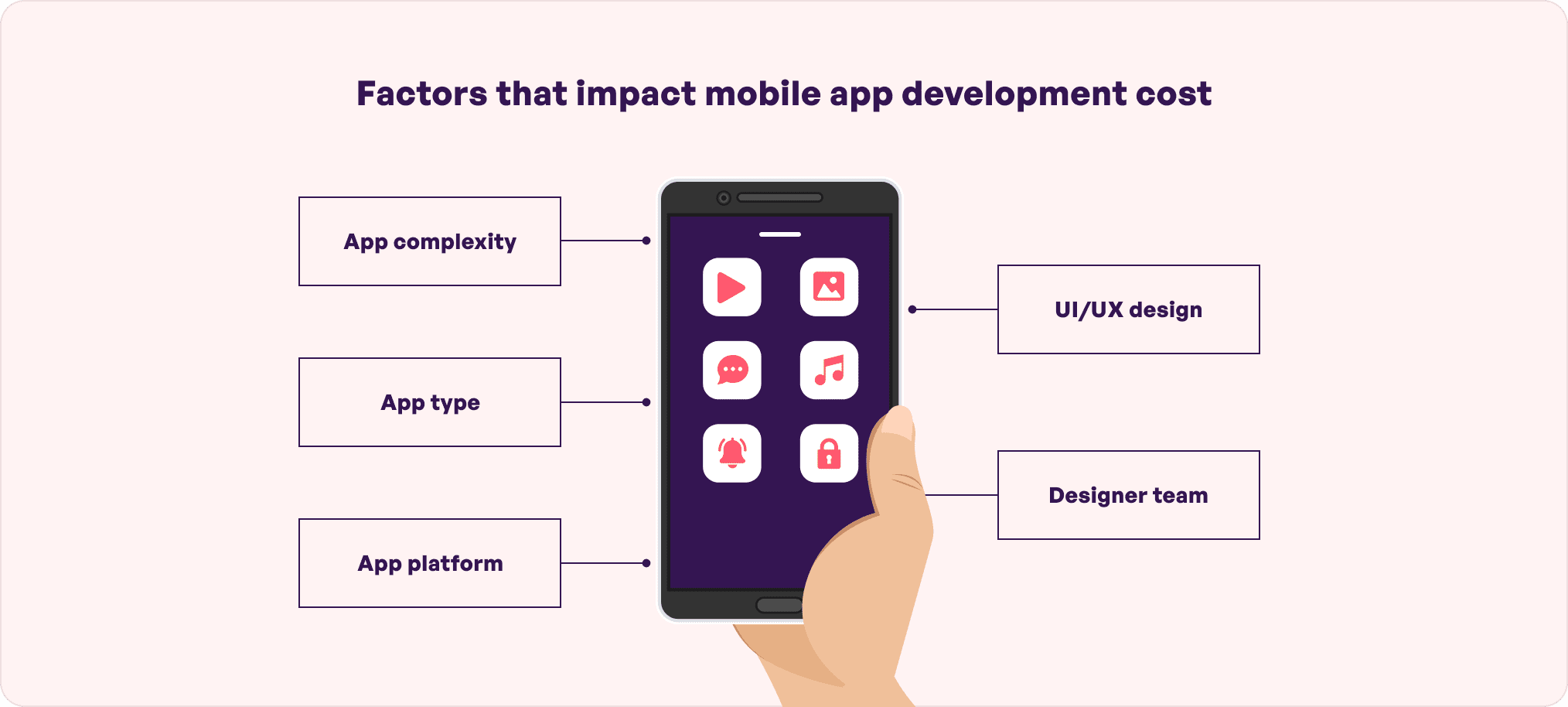
App complexity
Simple apps with few functionalities can cost around $5,000 to $10,000.
Mid-complex apps that require AI development, machine learning (ML) and social platform integrations like Grok can cost around $8,000 to $140,000.
Highly complex apps including multiple screens, robust cybersecurity, and real-time collaborations like Palmsy can cost around $60,000 to $300,000.
App type
The price of building a healthcare app can be between $30,000 to $100,000 whereas a fintech app development can cost between $30,000 to $300,000. Similarly, the expenses differ for various other types like e-learning, fitness, communication, social, e-commerce, weather, food delivery, and IoT applications.
It depends on the product discovery, API integrations, UI/UX design, MVP development, deployment strategies, security and quality assurance, and technologies being used – all of which are critical during the growth stages and beyond.
App platform
There are several reasons why you could move your app to cross platform and the associated mobile app development costs would be around $30,000 and 200,000.
Further, the expenses of building an Android app is roughly between$30,000 and $250,000 and an iOS app can cost between $70,000 and $250,000+.
UI/UX design
The cost of UI/UX design development of an app including prototype, mind-mapping, and strategy workshop is generally between $10,000 and $32,000.
It can vary due to high-fidelity sketches, motion graphics, ultra polished designs, custom animations, and best-in-class tech stack which are typically required in immersive digital products to successfully convert buyers into browsers.
Designer team
At Simublade, businesses can hire dedicated developers at an hourly rate of $25 to $50 with project prices clearly outlined in your contract. Despite our unmatched expertise and team composition, these factors do not influence the mobile app development costs. However, this is not the same everywhere and exorbitant fees might compromise budgets.
Further, there are a handful of hidden costs of app development for marketing, maintenance, app store fees, third-party integrations, and software license which businesses have to bear. The good news is that there are plenty of ways to reduce app development costs for startups, mid-sized businesses, and industry giants. It requires minimal effort and time, a few smart hacks, and collaboration with genuine developers. Let us dive deeper into it.
How to reduce mobile app development cost?
The first step here is to conduct a thorough research on the features that competitors are providing, security requirements, customization needs, and where your current process falls short. Next, create a project requirement document (PRD) which will include the capabilities that you expect from the mobile application and convey it clearly to the development company to avoid misunderstandings. After this, you can consider doing the following:
1. Outsource the app development
Collaborating with a top-notch mobile app development company with a highly experienced global pool of talent means half the work done. We at Simublade promise a free strategy session to help you deduce if they are the right fit. If you think we are, our app developers take up your project within 72 hours to ensure timely delivery.
Our USP includes scaling resources as per needs, working with an advanced set of languages and framework combinations, and maintaining a strict Agile schedule with weekly scrums for pricing transparency.
2. Opt for MVP development
MVP is the basic version of an app with just enough features to check market validation and gather valuable customer data and feedback. The core problems are then identified, for instance, interface loopholes, and accurately fixed which streamlines future app development expenses.
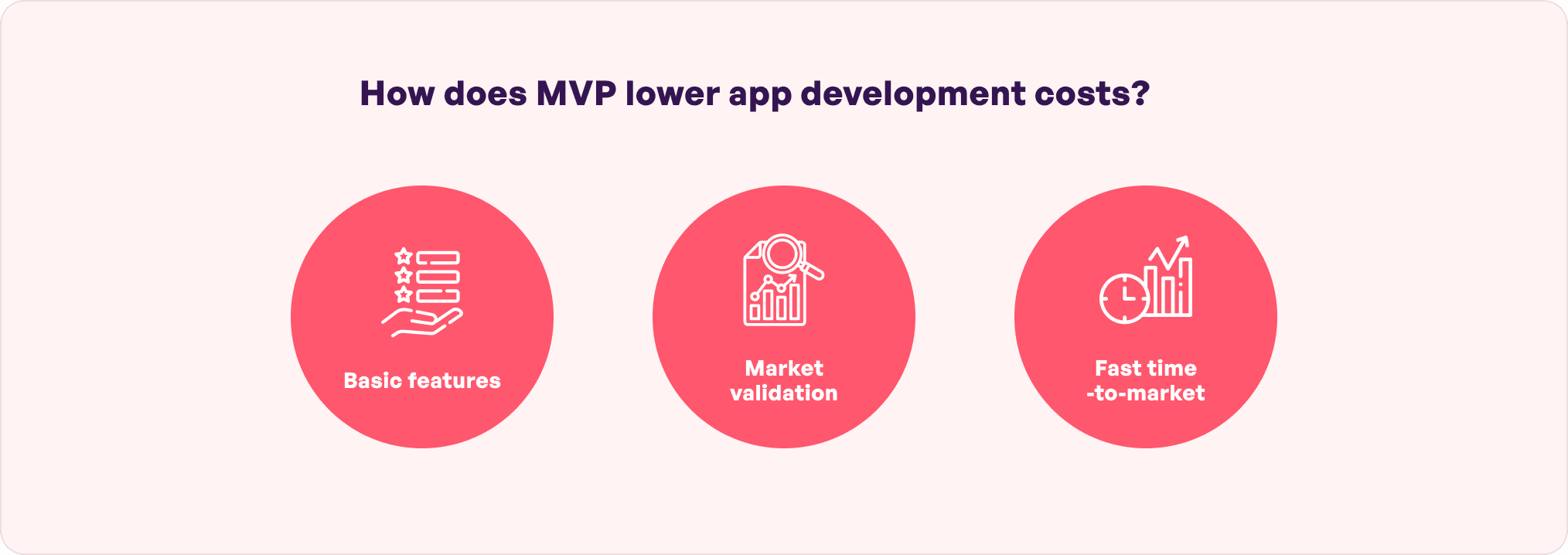
A few other factors that also lowers the price are:
- simple unit testings
- minimal cybersecurity measures
- low-fidelity and non-customized designs
- usage of primary technologies
In short, the overall cost to build an MVP is typically more economical than that of a full-fledged application. Businesses may use the MVP to get an idea of areas where they can trim the final budget like unnecessary features or services with no market demand.
So, the product is of utmost necessity to plan money redistribution and minimizing the app development expenses.
Get started with us at Simublade, a industry-leading MVP development company offering a market-ready product in just 12 weeks ensuring 30% cost reduction.
3. Choose simple UI UX design
Visual simplicity makes a greater impact than unnecessary personalizations. In fact, studies have shown that 78% of millennials are attracted to minimalist UI designs which can increase the chances of conversion. So, aim to build a clean and refined user experience with an elegant UI UX design which also makes a difference when reducing costs.
For instance:
- prioritize reusable modules and standard features
- keep the interface simple, responsive, and intuitive
- avoid too many drop-downs, buttons, and checkboxes.
However, do follow the standard rules for Android and iOS app UI design in terms of navigation, icons, typography, scrolling, CTA, and gestures to make sure you are not giving up on the basics in pursuit of minimalism or reducing mobile app design costs.
4. Support fast app development
It is one of the most useful ways to lower app development costs since a fast process means fewer hours spent on coding, testing, and debugging. This is exactly what our professionals at Simublade do using the Agile methodology which speeds up the entire process and allows quick adjustments which naturally lowers the resources spent. Despite the tight timeline, we design and develop apps that are thoroughly tested with zero security loopholes that lessens the risks of cybersecurity blows.
Businesses can also request for pre-built templates and components that are more affordable and can further cut down the app development timeline. Ultimately, these help keep the budget intact and also facilitate the launch of unique services way before your competitors do which can be the difference between success and failure.
5. Create prototypes
An app prototype model can be as simple as a paper sketch or a high-fidelity click-through digital product used for design validation.
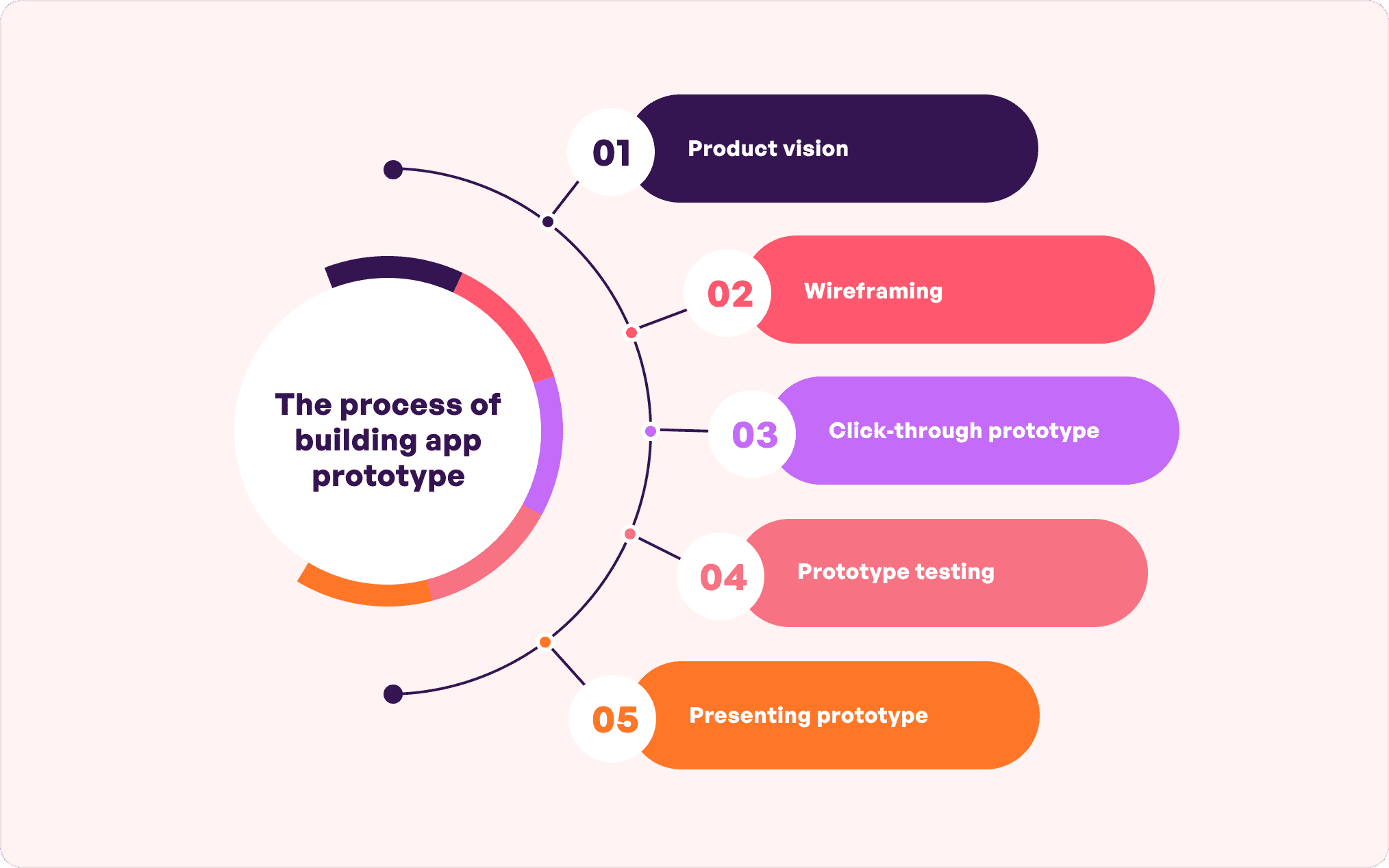
It is generally integrated with content and navigation and can be helpful in:
- mapping the potential journey of the buyer
- analyze the general behavior of user towards the design
- fixing bugs and design flaws
- helping business owners seek validation from stakeholders
- gather feedback for implementation
Further, developers observe and assess performance levels and make refinements to prevent reworks later. Overall, this process lowers app development expenses and accelerates the product development cycle.
6. Build cross platform apps
The cost of one cross platform app is 15% to 20% less costly than 2 native apps and is a good way to reduce app development costs. The top reason for this is that a single codebase including backend and multiple UI levels is required that runs on different platforms. So, developers do not have to rewrite codes multiple times which helps in cost-cutting. Even if they have to make changes, using the most ideal cross platform app development frameworks, like Flutter, can be helpful due to its Hot Reload functionality. Further, a unified code means fewer technical barriers, consolidated launch strategy, consistency in UI UX elements, and simplified hosting – all of these significantly save time and money.
Let us look at how to carry out cost optimization effectively and get more by spending less.
Mistakes to avoid while optimizing app development costs
Finding ways to lower app development costs means building the best-fitted product without having to spend a fortune. Below are a few tips to stick to this goal instead of simply reducing the expenses wherever possible:
- Do not lose sight of your business priorities which will ultimately impact customer attraction and retention. For instance, apps for e-commerce, gaming, and entertainment should not compromise on UI designs. These businesses can think of cutting costs elsewhere.
- Never compromise on the tech stack since this infrastructure is essential to build, run, grow, and grow your web and mobile apps. Cybersecurity technologies especially should never be traded off with basic stack which will otherwise lead to intrusion and vulnerability exposure.
- Thoroughly verify the app development partner instead of sticking to testimonials and portfolio. Make sure they offer quality services, work in your interest, cater to budgets, have a decent idea of technologies, and are in line with your goals.
In short, do not overlook the value and quality of your app while trying to lower the expenses since this will ultimately add to the costs in the long run. The product might require frequent repairs and updates which significantly affect budget.
Conclusion
Building a decent app is not easy but it can definitely be affordable. The best way to ensure this is to approach a reliable mobile app development company like Simublade. Businesses across the USA trust us since we use a range of time-trusted technologies in cloud, frontend, backend, payment getaways, DevOps. Further, we offer app support services ranging from features addition and design changes – all at standard rates without hidden charges which ensure maximum client satisfaction.
FAQs
Q. How can I reduce the cost of developing a mobile app?
Ans. If you are wondering how to reduce app development costs, consider a customer-focused and dynamic mobile app development company like Simublade. We offer reasonable rates without compromising on the quality of the project. With us, businesses can rest assured that they will never exceed their budget.
Q. What are some cost-saving tips for mobile app development?
Ans. A few tips to reduce mobile app development costs include opting for MVP development, cross-platform applications, and simpler UI UX design. Businesses may also use standard features and security measures instead of advanced ones. However, you may collaborate with development companies like Simublade where the developers do not charge exorbitant prices.
Q. How to lower app development expenses without losing quality?
Ans. Consider outsourcing your project to a versatile app development company where developers will lower the costs by considering a design sprint session followed by creating a prototype, product roadmap, and MVP. These ensure your final app is a robust one without having to invest a big chunk of your business capital.
Q. What factors affect the cost of mobile app development?
Ans. App type, app platform, UI UX design, security measures, features and functionalities, and the design team are primary factors that affect mobile app development costs.



